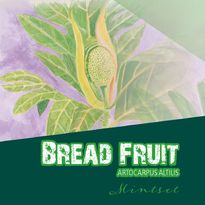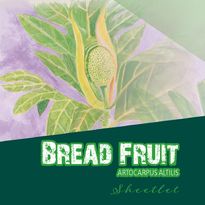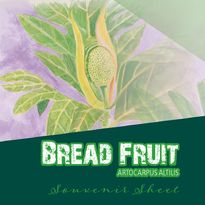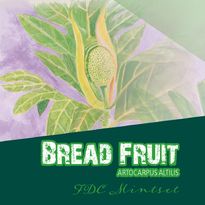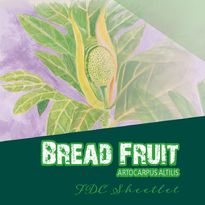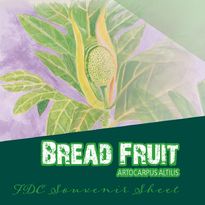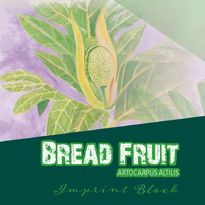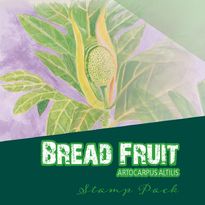Breadfruit - Artocarpus altilis
2020 Releases
Breadfruit
Breadfruit is believed to have originated in New Guinea and the Indo-Malay region and was spread throughout the vast Pacific by voyaging islanders. Europeans discovered breadfruit in the 1500s and were amazed and delighted by a tree that produced prolific, starchy fruits that, when roasted, resembled freshly baked bread. Breadfruit has long been a staple food in the Pacific islands and is now widely distributed and used throughout the tropics, as is a related species known as breadnut.
There are two species of breadfruit (Artocarpus altilis and A. Mariannensis). The importance and use of breadfruit differs in various Pacific island groups on methods of preparation and traditional techniques to preserve the fruits.
Breadfruit tree has dark-green foliage with leaves growing about 3 feet long. When breadfruit is cooked, it tastes just like potato. Many describe the taste to be similar to fresh baked bread which hints at the choice of the name ‘Breadfruit’.
Breadfruits are used for a lot of purposes. The fruit as well as the leaves and latex of its tree work as a natural medicine for curing diseases like skin infections, Diarrhoea, Asthma, Diabetes and Sciatica. It can be consumed as a fruit and also cooked as a vegetable. The seeds of Breadfruit can also be used for consumption. The leaves of Breadfruit grow over one foot long and so they can be used to provide shade. Breadfruit leaves are used in African regions for decoration purposes.
Traditionally, Breadfruit is a multipurpose species and all parts of the tree are used. It is an essential component of home gardens and traditional agro-forestry systems, creating a lush over story that shelters a wide range of cultivated and native plants. In the Pacific, breadfruit agro-forests have protected mountain slopes from erosion for more than two millennia.
The wood is light and durable and use for construction of houses and canoes because it resists termites and marine worms, carved into attractive bowls, statues, handicrafts, furniture, and other items such as bark cloth by separating the brown outer bark from the white inside bark, than beaten on a smooth stone to spread it. Also used to make a strong cordage used for building and fishing. The leaves are used as fans, sandpaper for fine woodwork, to wrap foods that are cooked in traditional earth ovens, and as biodegradable plates.
Sticky white latex is present in all parts of the tree and has been used for glue, caulk, and even chewing gum.
The latex is massaged into the skin to treat broken bones and sprains and is bandaged on the spine to relieve sciatica. Crushed leaves are commonly used to treat skin ailments and fungus diseases such as ‘thrush’. Diluted latex is taken internally to treat diarrhea, stomach aches, and dysentery. The sap from the crushed stems of leaves is used to treat ear infections or sore eyes. The root is an astringent and used as a purgative; when macerated it is used as a poultice for skin ailments.
Source : https://www.sciencedirect.com/topics/food-science/breadfruit
: https://ntbg.org/breadfruit/about
: https://ntbg.org/breadfruit/about/species
Technical Details
- Stamp Size
- 40mm x 30mm
- Souvenir
Sheet Size - 75mm x 85mm
- Sheetlet Size
- 115mm x 75mm
- Denomination
- K1.60, K2.50, K3.45 & K10
- Sheet Contents
- 25
- Format
- Horizontal
- Perforation
- 2mm
- Colours
- Full Colour Process
- Paper
- Tullis Russel Non Phosphor 104 gsm
- Gum
- Unwatered mark, PVA Gummed
- Printing Technique
- Multicolour Offset, Lithography
- Designer
- Yang Yansom - Philatelic Production
- Printer
- Henan Post Printing - CN
- Issue Date
- 27th May, 2020
- Withdrawal Date
- 27th May, 2021

